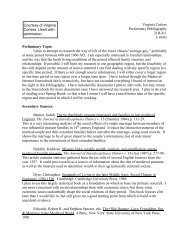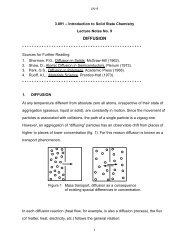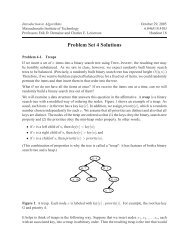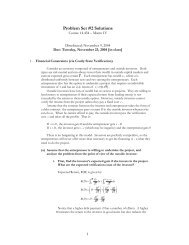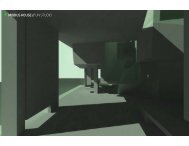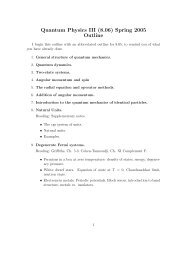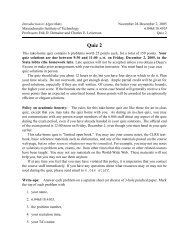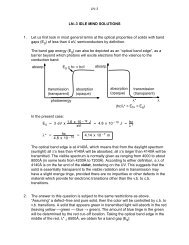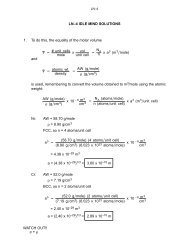3.091 â Introduction to Solid State Chemistry Lecture Notes No. 2 ...
3.091 â Introduction to Solid State Chemistry Lecture Notes No. 2 ...
3.091 â Introduction to Solid State Chemistry Lecture Notes No. 2 ...
- No tags were found...
Create successful ePaper yourself
Turn your PDF publications into a flip-book with our unique Google optimized e-Paper software.
LN–2E +* e 2o(Coul)) e 24pe o r o n4pe o r oE o(Coul)+* e 21 * 1 4pe o r onFor a “molar” crystal with ionic charges Q 1 and Q 2 , the molar ΔE o(Coul) is thus given as:+* MN AQ 1Q 2eDE 2 * 1 cryst1 4pe o r onHere M and N A stand, as indicated above, for the conventional terms, the Madelungconstant and Avogadro’s number.]For the present system (NaCl):ΔE cryst = –777 kJ/mole.<strong>No</strong>w considering reactions (1) through (5):ΔH Total = –414 kJ/molewhich is identical with the value experimentally determined and given for the reaction:Na (metal) + Cl 2 (gas) ! NaCl (solid)ΔH Reaction = –414 kJ/moleIn the Haber-Born cycle, the reaction energy (ΔH) associated with the formation of NaClfrom Na + Cl 2 may be summarized as:ΔH = E.I. + E.A. + ΔH V + 1/2 E.D. + ΔH crystΔH, the heat of reaction, may thus be obtained from the energetics of the steps leading<strong>to</strong> the end product. In most instances, however, the reaction energy (ΔH) is determinedexperimentally in a calorimeter and the Haber-Born cycle is used <strong>to</strong> obtain the value ofΔE cryst or E.A., which are both extremely hard <strong>to</strong> come by.11


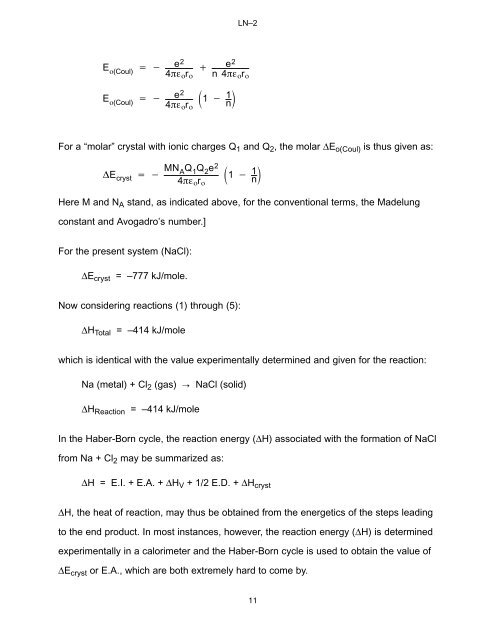
![18.03 Class 21, April 3 Fun with Fourier series [1] If f(t) is any decent ...](https://img.yumpu.com/51148985/1/190x245/1803-class-21-april-3-fun-with-fourier-series-1-if-ft-is-any-decent-.jpg?quality=85)

